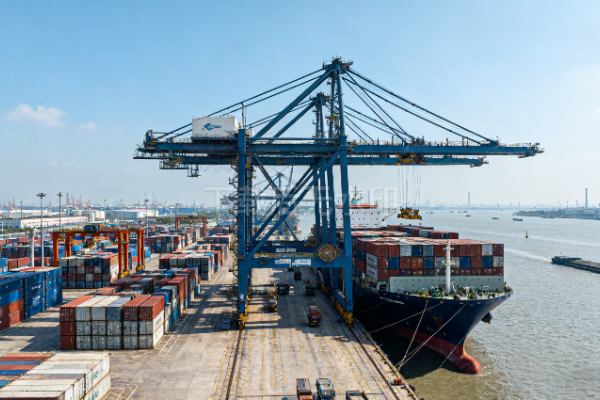China's first blockchain-based maritime approval system has been put into trial operation in Shanghai, enabling "instant approval" of the new three shipping items

September 25, 2025, Update: Early this morning, the vessel "Orient Canada," loaded with lithium batteries from Sungrow Power Supply Co., Ltd., departed from Shanghai Port's Waigaoqiao Phase II Terminal bound for Sydney Harbor, Australia. This voyage is particularly significant in that cargo declaration was completed using China's first automated maritime approval system based on blockchain technology. This marks the official launch of this innovative application, opening up a new path for smart customs clearance for my country's "New Three Items" seaborne exports.
The system, jointly developed by the Pudong Maritime Safety Administration, the Shanghai Municipal Data Bureau, and Shanghai Yitong International Co., Ltd., leverages the Shanghai Cross-Border Trade Data Network to establish a "Blockchain Service Platform for the Safe Transportation of Maritime Dangerous Goods." It focuses on addressing the customs clearance challenges of the "New Three Goods" (NEVs), including new energy vehicles, lithium batteries, and photovoltaic products.As a new engine of export growth in my country, demand for these goods continues to rise, with the Port of Shanghai alone shipping approximately 300,000 standard containers annually. However, traditional declaration procedures require manual verification and are completed within the legally mandated 24-hour deadline. Furthermore, duplicate inspections of dangerous goods are a prominent issue, often leading to logistics delays of 3-5 days.
The in-depth application of blockchain technology has made "instant customs clearance" a reality. On the first day of the trial operation, the system simultaneously implemented four innovative scenarios: after enterprises upload cargo safety technical documents, the platform automatically extracts structured data using optical character recognition (OCR) technology; data is connected with authoritative testing institutions such as the Shanghai Research Institute of Chemical Industry to complete source traceability verification and generate blockchain evidence; the maritime declaration system automatically reviews compliance applications based on on-chain verification results, instantly approving compliance applications; and cargo with evidence can enjoy "exemption from or reduced inspection" treatment, significantly reducing customs clearance disruptions. "Previously, it took half a day to wait for approval, but now it's approved instantly after submission, significantly saving capital turnover and warehousing costs," said the head of logistics at Sungrow Power Supply, praising the efficiency of the new system.
Behind this innovative practice lies Shanghai's dual commitment to promoting technological implementation through institutional innovation. The "Shanghai Regulations on Promoting the Use of Blockchain to Empower Electronic Documents in the Pudong New Area," implemented in January 2025, clarified the rights protection and technical specifications for electronic documents at the legislative level, providing institutional support for platform development. A representative from the Pudong Maritime Safety Administration stated that the system, through "data on-chain and trust interconnection," breaks down departmental barriers and achieves a "double improvement" in both supervision and service. This system strengthens security through an immutable evidence chain and reduces institutional transaction costs for businesses through automated approvals. Upon official implementation, it is expected to cover all "new three items" of export goods at the Port of Shanghai.
A significant breakthrough in integrated maritime services in the Yangtze River Delta, this system complements the "New Three Goods" export green channels established in Nanjing, Ningbo, and other regions, further improving the logistics support system for China's new energy industry exports. Industry insiders point out that the deep integration of blockchain technology and maritime administration not only injects momentum into the "New Three Goods" initiative but also provides a replicable "Chinese solution" for the digital transformation of global shipping. The project is currently optimizing its functionality based on trial operations, with plans for a full launch later this year.









